Sennheiser Wireless for Musiktheater im Revier
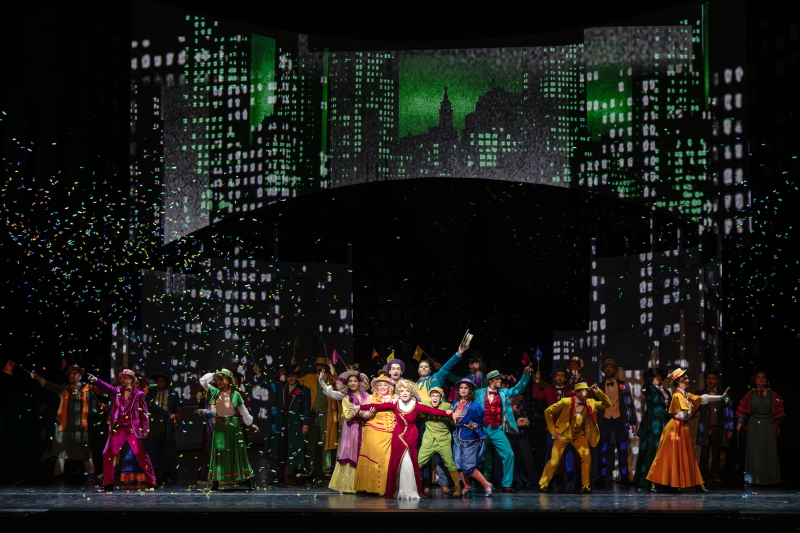
The Musiktheater im Revier (MiR) has gained a reputation that extends far beyond the borders of Gelsenkirchen. With its successful combination of tradition and modernity, MiR offers its guests unique cultural experiences. The programme includes a wide variety of theatrical events: works from the classical opera repertoire, operettas, dance performances, musicals, world premieres and experimental formats all find their place in Gelsenkirchen. And since 2019, the theatre’s artistic range has been further extended by puppet performances. In January 2024, new wireless channels from the Sennheiser Digital 6000 series made their debut at MiR. Carsten Kirchmeier’s highly acclaimed production of the musical comedy “Hello, Dolly!” used 20 Sennheiser EM 6000 DANTE two-channel receivers, 40 SK 6212 ultra-light mini-bodypack transmitters and eight SKM 6000 handheld transmitters for the first time.
The 19” rack that holds the receivers, an ASA 3000 active antenna splitter and an ACA 3 antenna combiner is located in an ante-room close to the stage entrance. Before the performers go on stage, an experienced sound crew equips them with their handheld and bodypack transmitters, which are stored in clearly marked compartments.
In the same room, a laptop with Sennheiser’s Wireless Systems Manager is installed. The WSM software provides a clear overview even in complex scenarios, especially because it can manage not only the new Digital 6000 systems, but also the theatre’s proven analogue wireless equipment. This includes, among other things, an EM 3732-II true diversity receiver (for two SKP 3000 plug-on transmitters), an EM 2050 for the sound control room (announcements, lighting rehearsals, etc.) and various SKM 5200 handheld transmitters and SK 5212-II bodypack transmitters. Twenty-four analogue wireless channels from the Sennheiser 3000 series are available in the smaller auditorium (“Kleines Haus”) and the foyer. Including those used for in-ear monitoring and audio description, MiR has more than 75 Sennheiser wireless channels.
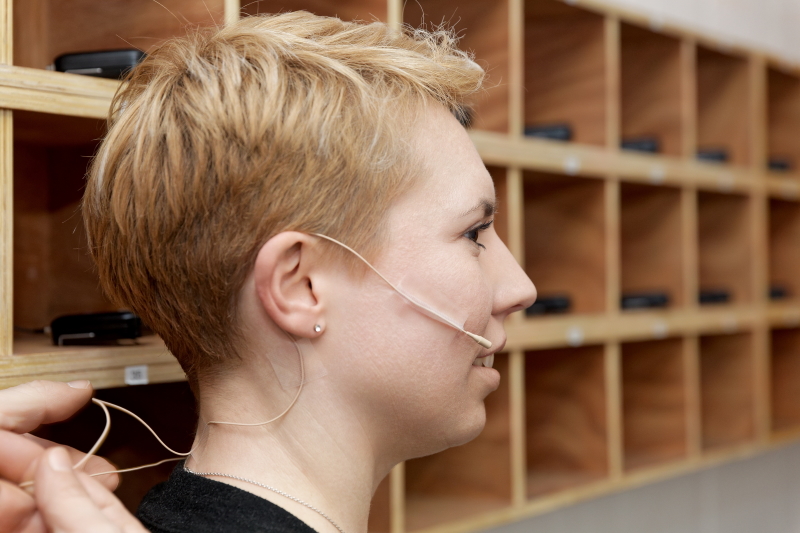
To ensure perfect coverage for the actors over the entire performance area, the larger venue (“Großes Haus”) has several Sennheiser antennas distributed throughout the auditorium. One of the special features is the fact that A 5000-CP passive antennas with circular polarisation are not used for IEM purposes, but as receiver antennas for handheld and bodypack transmitters. Two A 5000-CP are installed left and right in the proscenium arch, where two active AD 3700 directional antennas with integrated boosters are also located. For scenarios with a closed safety curtain, two A 3700 active broadband omnidirectional antennas (with integrated AB 3700 antenna boosters) are mounted on the rear wall of the larger auditorium. Other Sennheiser antennas are available for wireless in-ear monitoring and audio description. The battery packs of the handheld transmitters and the mini-bodypack transmitters are recharged in seven Sennheiser L 6000 intelligent charging stations.
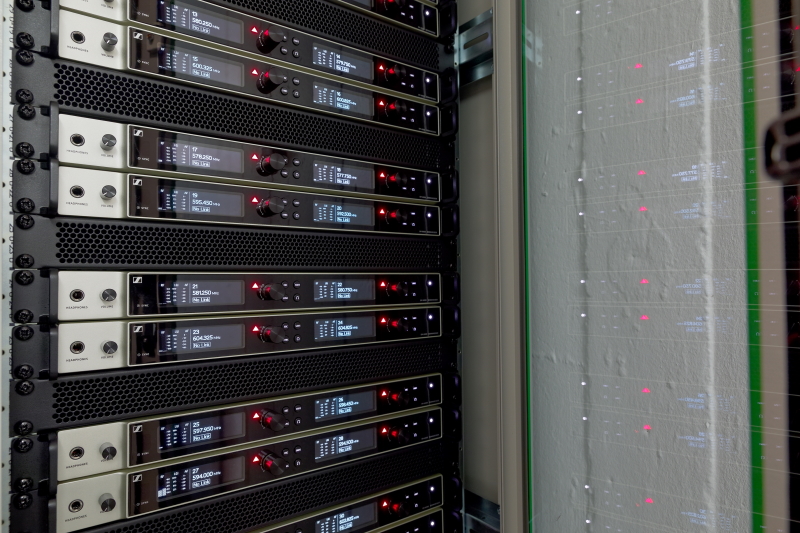
“At MiR, we have an extremely high proportion of productions with electro-acoustic amplification– a hundred or more audio channels on the mixing console are not uncommon, for example if we need to amplify a large orchestra and a band or an ensemble and a choir,” explains Jörg Debbert, head of the sound engineering department at MiR. Debbert has been working at MiR for more than a decade and, together with Dirk Lansing, Jan Wittkowski, Fabian Halseband and Max Kallien, he is part of a dedicated team of expert audio professionals.
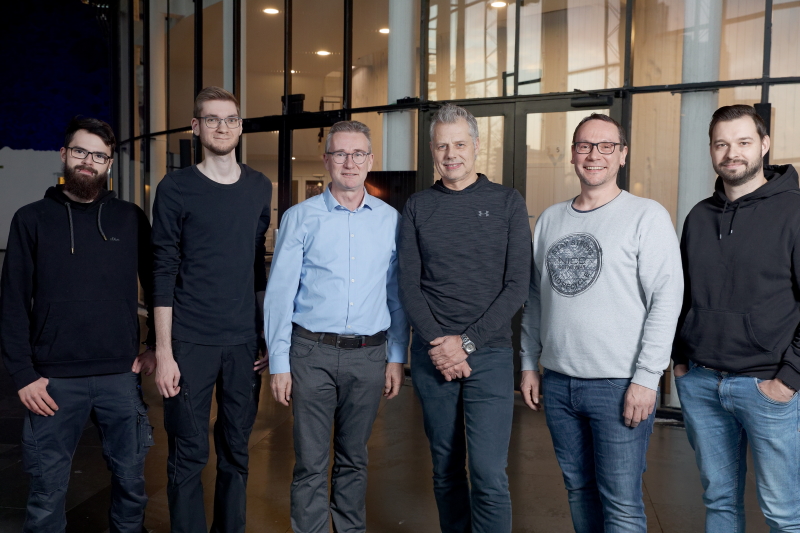
L-R: Max Kallien, Fabian Halseband, Per Witte, Jörg Debbert, Dirk Lansing, Jan Wittkowski
The five-person team has a remarkably tight programme to carry out every single day and is therefore happy to make use of anything that makes their job easier. “It used to take a huge amount of logistical effort to distribute the theatre’s existing wireless links according to the demands of each production and to supplement them with rented systems,” Jörg Debbert recalls. “The receivers were in mobile racks that we moved around the theatre as required. But it was often the case that we still weren’t able to meet the demand with our own systems, especially because we sometimes need 40 wireless channels in the large auditorium and ten or more channels in parallel in the smaller theatre. We are really pleased that this huge logistical effort is no longer necessary now that we have acquired our new Sennheiser Digital 6000 systems – not to mention the costs we save by not having to pay for rented systems every time.”
It was clear from the start that the new wireless channels were going to be digital: “Otherwise, you can’t handle frequency management properly nowadays,” says Jörg Debbert. “Before we acquired the Sennheiser Digital 6000 systems, we looked at products from various suppliers. But it was the Sennheiser systems that convinced us most, especially due to their excellent sound and attractive cost-performance ratio. In addition, it was easy to integrate them into our existing infrastructure, which, alongside our proven and highly reliable analogue transmission channels from the Sennheiser 3000 series, also includes wireless in-ear monitoring systems from the Sennheiser 2000 series. We wanted to continue to use our existing equipment, so in order to conveniently manage the analogue and digital wireless channels together, the obvious solution was to couple them with the Sennheiser Wireless Systems Manager. Another advantage was that we have been working with rented Digital 6000 systems for years at MiR and our experience with them has been very positive. All in all, we can say that our new systems now give us a much more stable solution than before, because, as we no longer need to use rented equipment, we can eliminate another potential source of problems and setups can be carried out more easily and quickly. So far, we haven’t had a single failure!”
Jan Wittkowski, who has worked at MiR since 2010 and has been an employee in the sound department since 2013, only has praise for the Sennheiser Wireless Systems Manager: “One of the features that really makes my everyday work easier is the threshold of the squelch level, which can be precisely specified in the current version. The WSM software then clearly signals which frequency ranges you should not use. It really does a good job, and distributing the frequencies works wonderfully. During the performances, you can always keep an eye on the software’s user interface. In fact, I hardly ever look at the receiver displays anymore. As the new Digital 6000 systems mean that we don’t need to use rented material, once a frequency distribution has been set, it can be used again and again for long periods of time. We rarely have problems with external interference. The only thing that happens sometimes is that productions bring their own wireless channels with them, and these have to be integrated into the existing setup.”
With their “Sennheiser Digital Audio Codec”, the Sennheiser Digital 6000 systems achieve an audibly better sound quality and a greater dynamic range than conventional analogue wireless systems. When asked about the differences in sound between analogue and digital channels, Debbert answers: “One of the soloists of our ensemble immediately noticed a positive difference in the sound when his voice was transmitted for the first time with one of the newly acquired SK 6212 bodypack transmitters during an ongoing production – even though he doesn’t hear his voice via in-ear systems during his performances. He said his voice sounded more open and had greater resolution. My personal impression is that the sound quality of the analogue 5000 series is almost on a par with that of the digital 6000 systems. However, when it comes to dynamic resolution, the digital solutions are clearly superior and you can notice that a conventional compander is no longer used. As a result, the sound seems to be richer in detail.” Dirk Lansing adds: “You can certainly hear the difference, even though a typical member of the audience might not notice such details. But sound engineers with trained ears will hear the positive effect straight away. And in spite of the greater transparency, there is no risk of additional feedback and I don’t need to adjust the EQ channel any differently from when I’m using a channel from the 5000 series. In a blind comparison, I could clearly tell the difference between analogue and digital wireless transmission!”
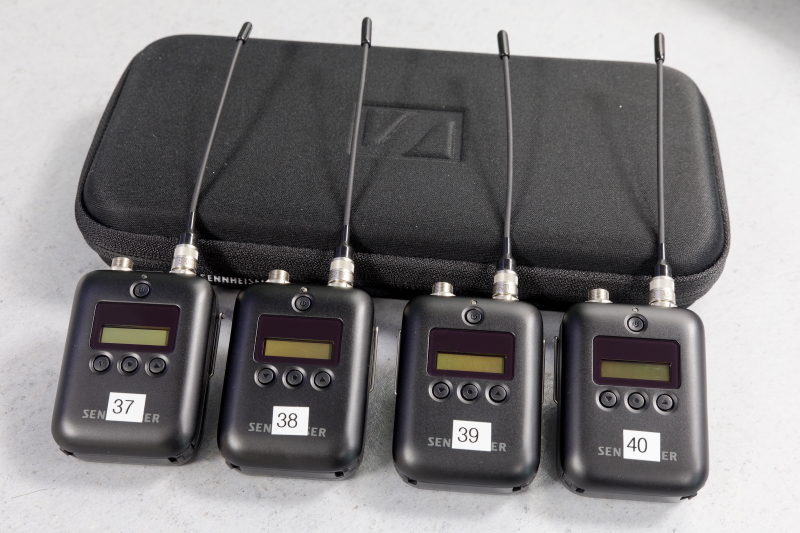
The members of the sound team at the Musiktheater im Revier are in unanimous agreement about the “very long battery life” of the new Sennheiser Digital 6000 systems. Jan Wittkowski is pleased that battery changes are no longer necessary, even throughout several long rehearsals in one day: “A battery life of up to 14 hours means that we can easily rehearse in the morning and in the evening without having to replace or recharge the batteries in the meantime,” he explains. “And we can also fully rely on the display for the remaining battery life in the Wireless Systems Manager.”
Jörg Debbert likes the fact that the Sennheiser Digital 6000 systems have the quality seal “Made in Germany” and are manufactured in Wedemark: “Short communication channels are always an advantage, particularly in our industry, and if a manufacturer is located in this country, practicable solutions to special challenges can often be found more quickly.”
Per Witte (Business Development Manager Germany North - Professional Audio), who holds a degree as a tonmeister, has been providing support for the sound department of the Gelsenkirchen theatre on behalf of Sennheiser for more than 20 years. Commenting on the acquisition of the Digital 6000 systems by MiR, he says: “At the Musiktheater im Revier, a high level of audio expertise has now been combined with our best digital wireless microphone technology. This interaction results in fantastic and transparent sound that the audience can enjoy during every performance in Gelsenkirchen – the equipment’s premiere on “Hello, Dolly!” was a huge success. For me personally, the Digital 6000 series is a jewel in the Sennheiser portfolio, especially because it is far superior to systems from other suppliers in terms of sound quality and frequency efficiency.”
The Musiktheater im Revier has its own opera ensemble, a choir (with a supporting choir) and a contemporary dance ensemble, the MiR Dance Company. MiR is operated by Musiktheater im Revier GmbH (managing partner: the City of Gelsenkirchen). With around 300 employees, it presents around 300 events each year.
The theatre in Gelsenkirchen consists of a large cubic structure built on a square floor plan, with a glass façade that opens onto the forecourt to provide a view of the foyer. In contrast to the angular exterior, the interior spaces accessible to the public have a softer design. Various renowned artists led by Werner Ruhnau were involved in designing the Musiktheater im Revier. The foyer is dominated by six sponge reliefs by Yves Klein in the colour “Gelsenkirchen Blue”. Works by Paul Dierkes, Jean Tinguely, Robert Adams and Norbert Kricke further adorn the building.
The main venue of the theatre, which was opened at the end of 1959, is the “Großes Haus”, the larger auditorium, with 987 seats in a symmetrical arrangement that offers all members of the audience an unobstructed view of the stage. Above the rising stalls are two balconies, each with three groups of stepped seats. The walls and the ceiling are painted black, while the balcony fascias are finished in matt aluminium coated with silver leaf and the seat upholstery is in a medium-grey colour. Above all of this is a “starry sky” with numerous small lights. The size and opening of the stage can be varied by portal walls, height-adjustable platforms and a movable apron stage. The acoustics in the auditorium can be influenced by using the VIVACE electronic room acoustics system from Müller-BBM, as well as by the use of mechanical elements.
The smaller auditorium, the “Kleines Haus” (312 seats), is connected to the “Großes Haus” by a bridge. The auditorium can be extended into the foyer by removing movable partitions and doors. The exterior wall of the “Kleines Haus” has dark-grey natural stone cladding, and the south wall is decorated with a relief of metal pipes created by Norbert Kricke.
The avant-garde architecture of the Musiktheater im Revier caused a sensation when it was unveiled in 1959 in the “city of a thousand fires” – the “Revier” in its name refers to the former coal-mining district around Gelsenkirchen where countless gas flames burned through the night. And even today, the building complex still seems modern. The theatre, which is often referred to as one of the most important theatrical buildings of the post-war period and which describes itself as “the most beautiful opera house in the Revier” is entirely barrier-free. For people with a visual impairment, MiR offers audio description for selected performances, and these can be enjoyed with the best speech intelligibility thanks to Sennheiser EK 1039 Tourguide receivers.
 How to resolve AdBlock issue?
How to resolve AdBlock issue?